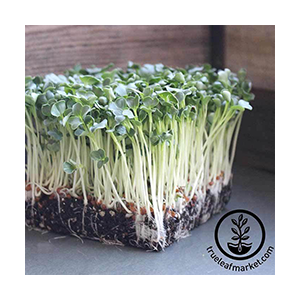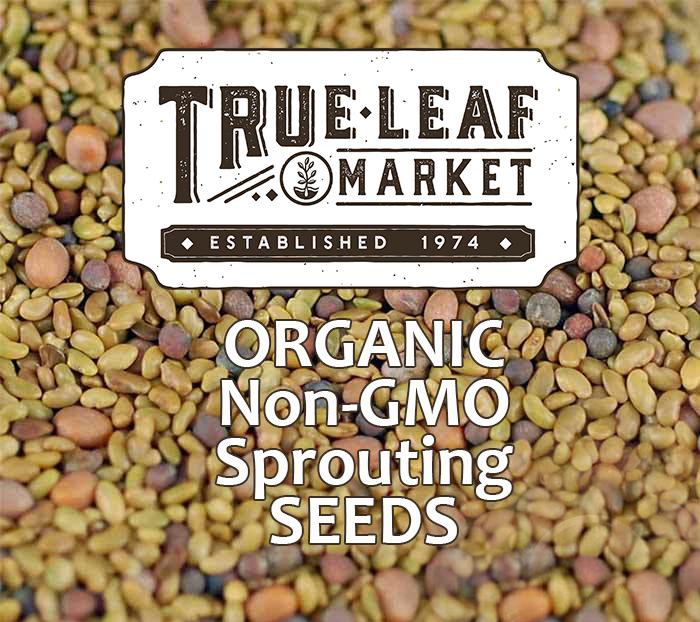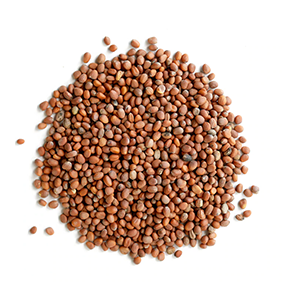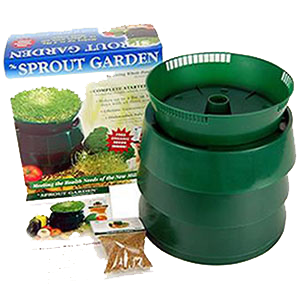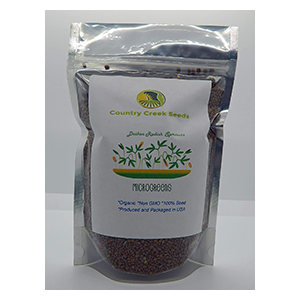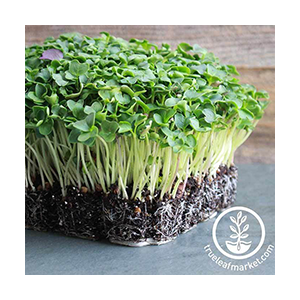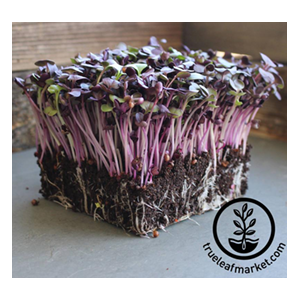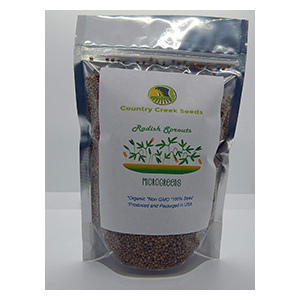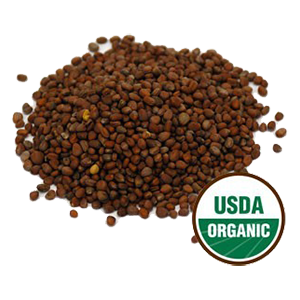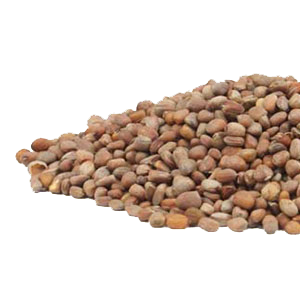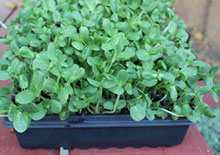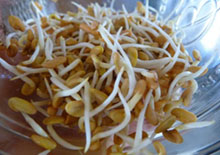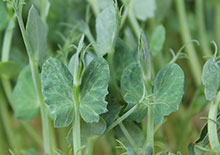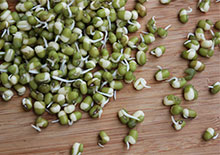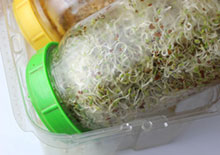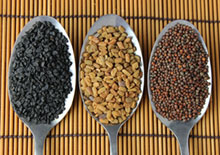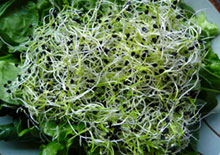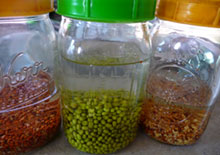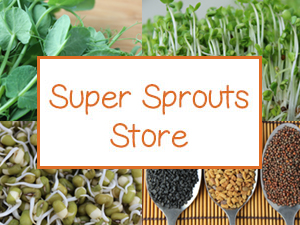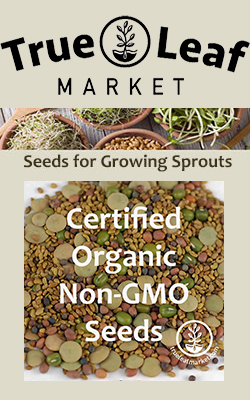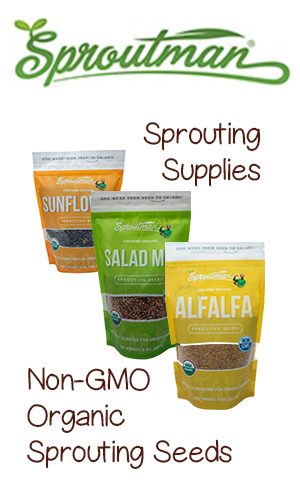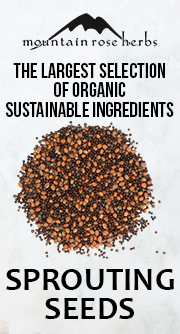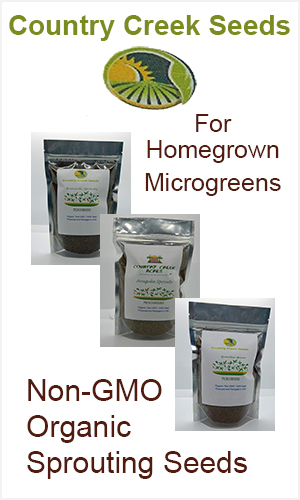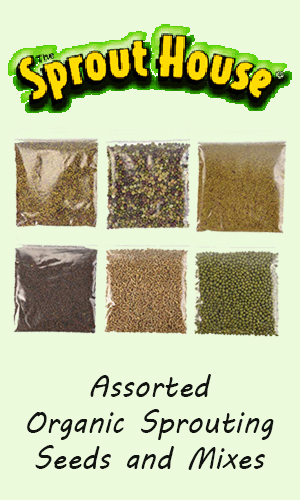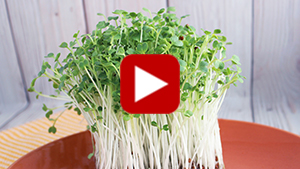- Home
- Super Sprouts
- Daikon Sprouts
Daikon Sprouts, How to Grow and Reason to Eat Them
What are Daikon Sprouts? | Sprouts Vs Microgreens | Grow Your Own Microgreens | How to Grow Daikon Sprouts | Nutrition | Precautions | Shop
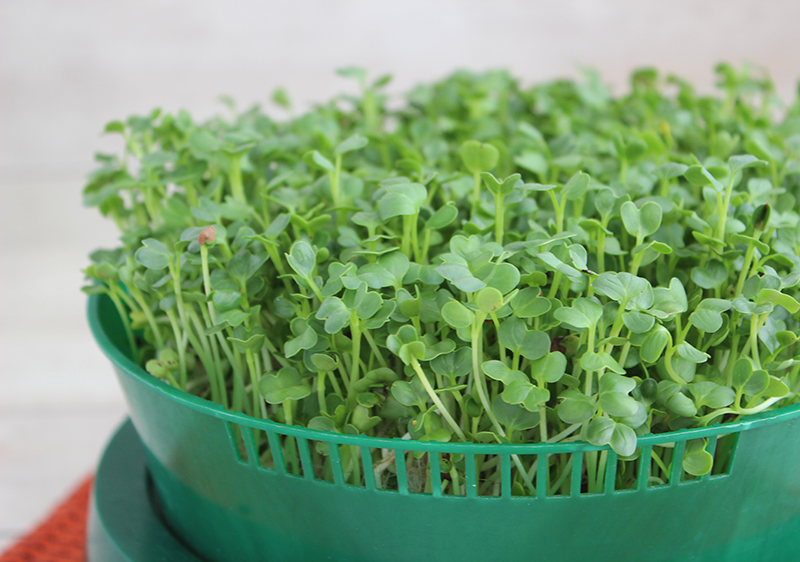
Daikon sprouts are a variety of microgreens produced from the daikon radish; a long white root vegetable known for its mild spicy earthy flavor. Different than fast-growing red radishes, which are considered a summer crop, daikon radish is harvested in the winter season.
The daikon root (Raphanus sativus var. longipinnatus) is consumed throughout Southeast Asia and the Orient, where there are many regional varieties.
Table of Contents
What are Daikon Sprouts? | Sprouts Vs Microgreens | Grow Your Own Microgreens | How to Grow Daikon Sprouts | Nutrition | Precautions | Shop
It is probably most well known worldwide for its use in Japanese cuisine. The generic term "daikon" actually comes from its Japanese name meaning "big root" (大根). Also called "Japanese radish", some species of daikon like the Japanese minowase can grow to be over 2 feet long.
When the seeds are sprouted vertically to produce the first set of leaves, they are referred to as kaiware daikon (カイワレ大根). The term "kaiware", which means "open shell", describes the shape of the leaves which have a heart-like shell appearance.
Daikon microgreens with their succulent green leaves and straight white stems are valued for gourmet use as culinary accents.
Originating as a microgreen variety in Japan, their peppery pungent flavor, resembling fresh daikon root, is utilized as a garnish in Japanese cuisine, salads, and sushi.
According to some sources, hydroponic commercial production of daikon sprouts began in the 1960s in Fukuoka Prefecture located in southern Japan. And, by the 1980s, they were widely available for most of the Japanese population.
In Japan, kaiware daikon are traditionally grown to produce very tall white stems. This is typically achieved by keeping the sprouts in a dark location until the very end of the leaf greening process.
Similar to cress sprouts grown commercially in many European
countries, daikon types are frequently sold growing upright on mats in
small containers. And, next to alfalfa sprouts, they are today one of the most common commercial sprout varieties available in produce markets.
Likewise, there are several daikon sprout variations, depending on the seed cultivar. While the most common is the white stemmed variety, some modern cultivars have a red or purple pigmentation with darker leaves and a hot spicier taste.
Sprouts Vs Microgreens
What's the difference between a sprout and a microgreen? Although microgreens are sometimes referred to as "sprouts", technically speaking, a sprout is the first stage of development after the seed germinates and produces small green leaves.
Microgreens are grown for a longer period of time as well as in a vertical style on a soil-type medium, a sprouting tray, or a hydroponic mat. They therefore typically have long stems with larger green leaves and are harvested just before the "true leaves" emerge.
One of the reasons we often prefer microgreen tray sprouting to jar sprouting is that you basically get a larger volume of sprouts for the same amount of seeds.
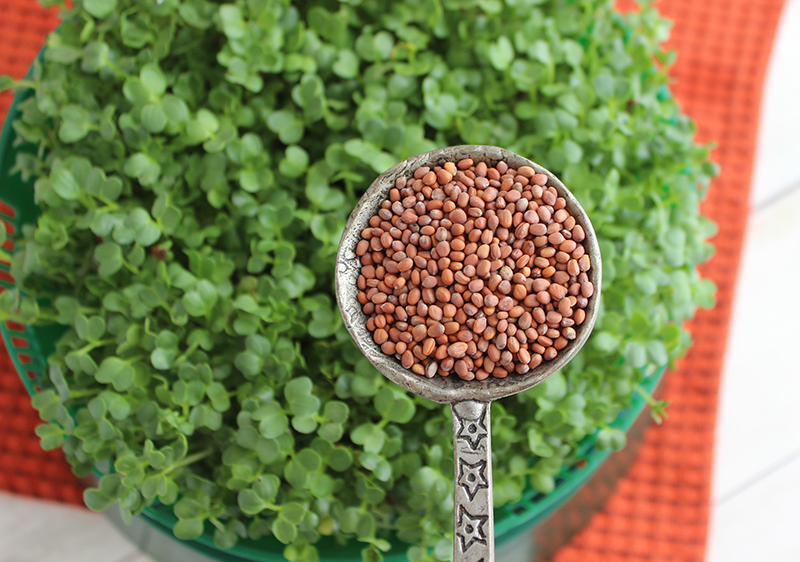
Growing Your Own Sprouts or Microgreens
Usually, if you love the taste of radishes, you will enjoy the zesty intense flavor-filled addition of daikon sprouts to meals, sandwiches, and salads. Because sprouts, in general, are not widely available in most stores, if you’re an avid sprout consumer, learning how to grow your own is essential.
One of the greatest benefits of sprouting or growing microgreens is the large quantity of produce you get from just a small amount of seeds. In addition, they make a great backup food resource if you live in an urban environment, on a sailboat, or don't happen to have space for a garden.
Pounds of seeds will store for years as they
have a long shelf life and the sprouts they provide can be an emergency
fresh food supply if needed.
We'll discuss below the newly discovered sulforaphene compound as well as other nutritional benefits of daikon radish sprouts, but first here is one basic method for growing your own microgreen-style sprouts at home which can also apply to many sprouting seed types.
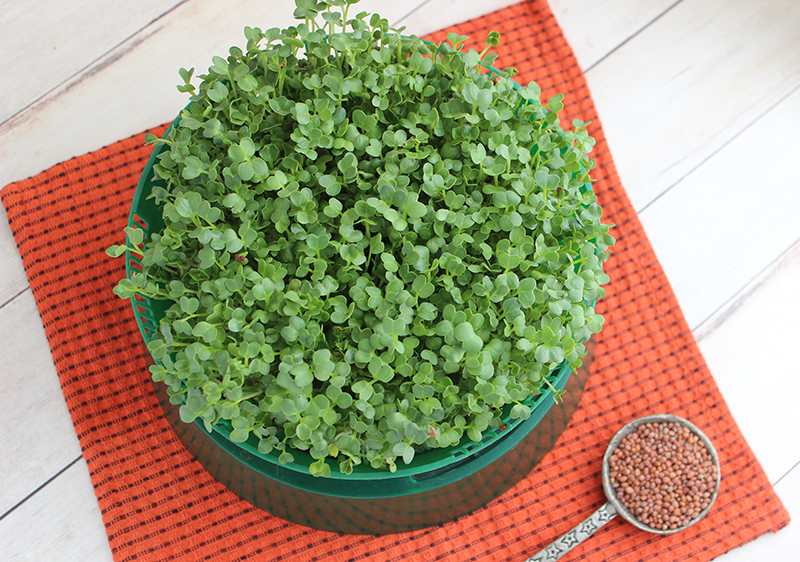
How to Grow Daikon Radish Microgreens
Daikon radish sprouts are traditionally grown as a vertical sprouting microgreen rather than as a jar sprout, like red radish sprouts.
We’ll share the specifics about growing microgreens on hydroponic mats and coconut coir on another page, but here is one of our favorite methods for growing daikon microgreens that only requires the basics: a tray sprouter, seeds, and pure water.
Method Using a Sprout Garden Sprouter
For this method, you don't need to have a constant supply of soil or other growing materials. But, you do need to initially invest in the Sprout Garden Sprouter trays, which include 3 drainboard trays (7 inches in diameter) with 3 lid covers. These are one of the most popular re-usable sprouters for making homemade sprouts and are a worthy investment.
They are inexpensive, made of lightweight BPA-free plastic, easy to store, and are stackable during the beginning stages of seed sprouting. Most people use them instead of jar sprouting but we like to also use them for growing seeds as microgreens.

Steps for Growing Daikon Sprouts - One Tray of Microgreens
- Soak 2 tablespoons daikon radish seeds overnight in 1 ½ cups pure water.
- Strain seeds and distribute them evenly on the bottom tray. Place the lid on top.
- Spray the seeds once a day in the morning and once at night and replace the lid.
- After the seeds sprout longer white tails, twice a day rinse them with pure water. You can do this by turning over the lid and filling it with an inch or so of water, then plunge in the tray with sprouted seeds. Let soak for a minute then strain and replace lid. (Use a stackable tray underneath to catch any liquid.)
- Repeat the previous step twice a day as the white tails grow hairs, leaves develop, and the sprouts start to grow vertically.
- When the sprouts start to hedge-up and reach the top of the lid, remove it and allow indirect light to green the leaves. At this point, you can rinse twice a day but leave them in the soak water for about 5 minutes to give them a good drink.
- Harvest the daikon sprouts right before the set of "true leaves" develop.
- Snip with kitchen scissors all the way down to where the roots mat-up.
- Store your thoroughly drained sprouts in a container or bag that is not tightly sealed. One 7-inch diameter Sprout Garden tray will usually yield close to 4 ounces of sprouts.
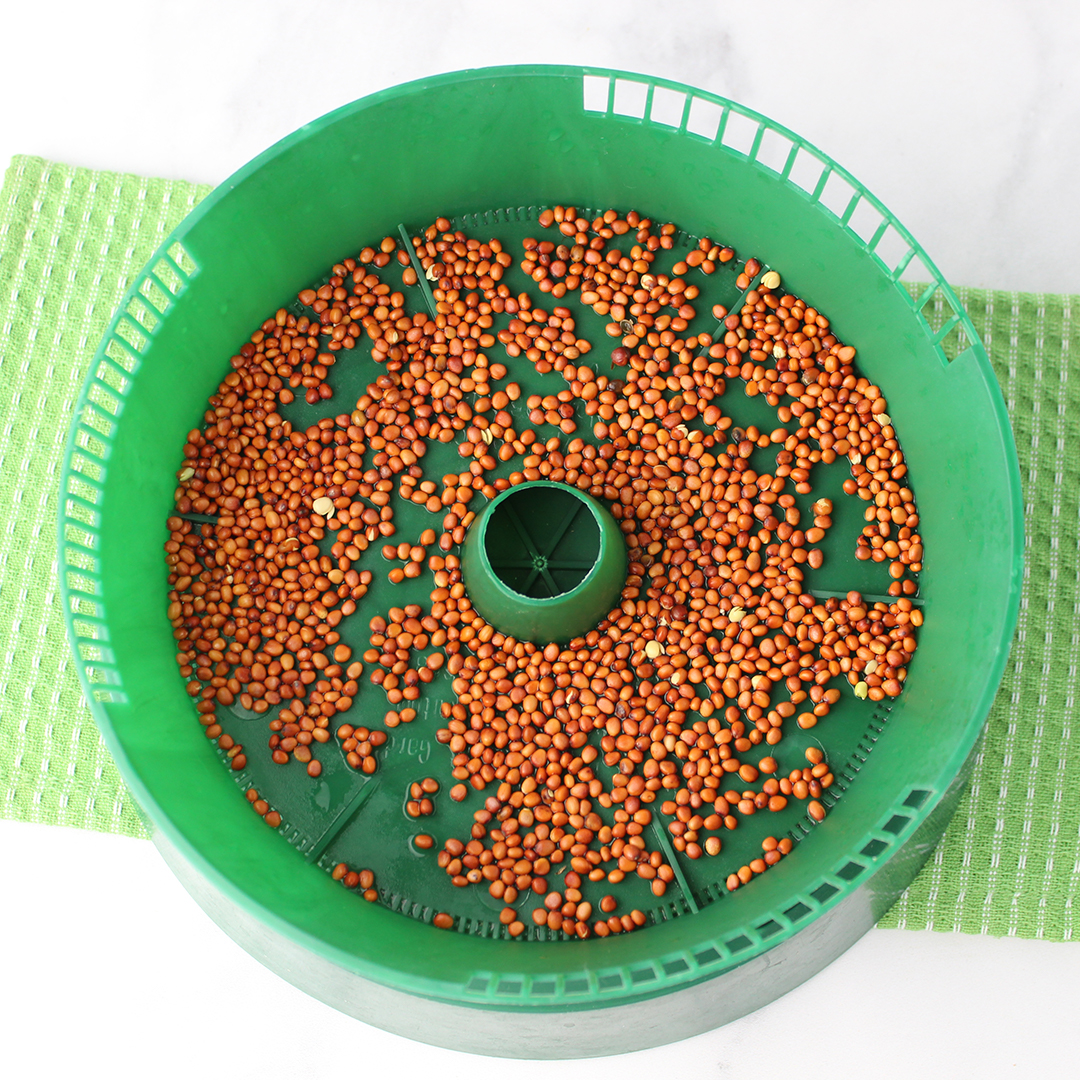
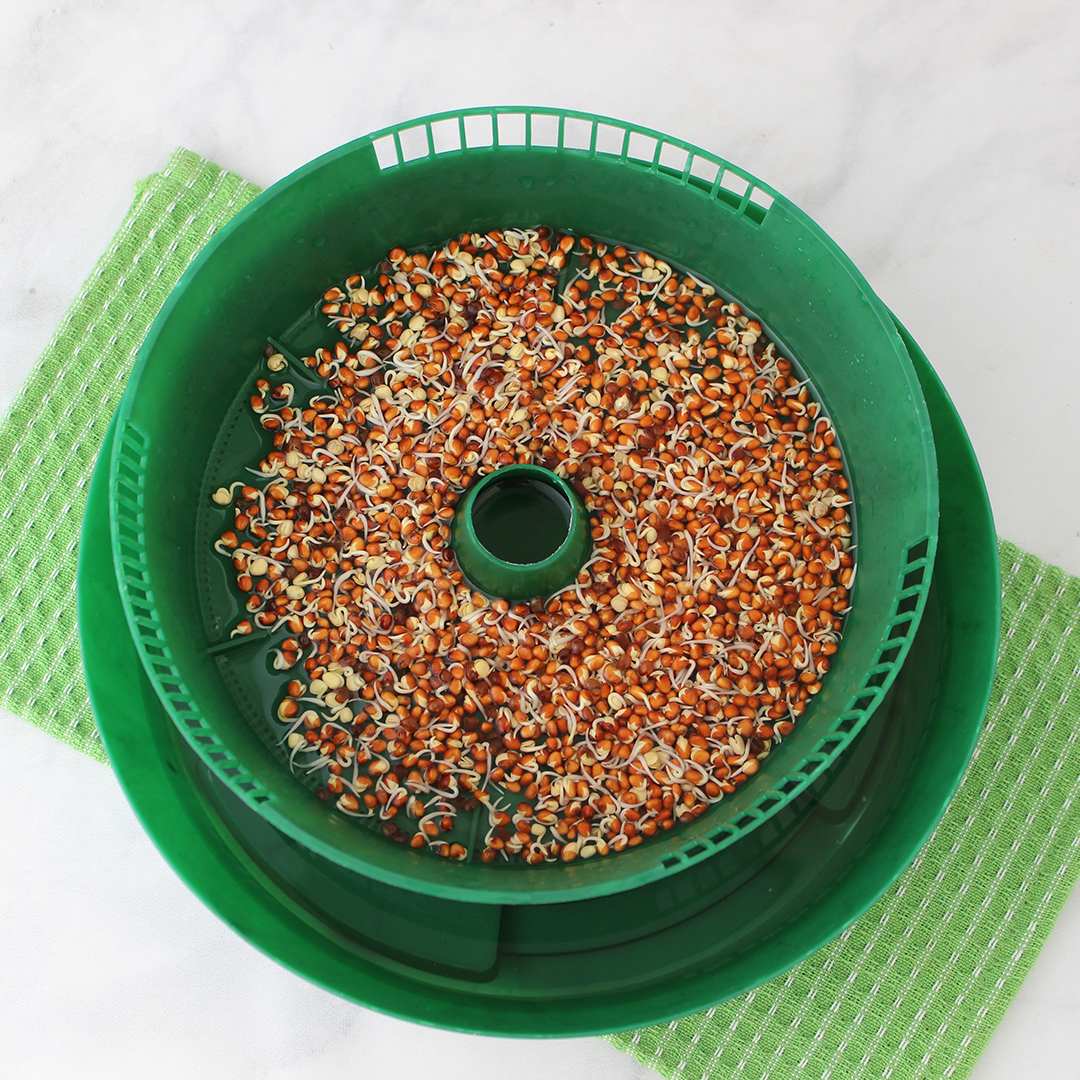
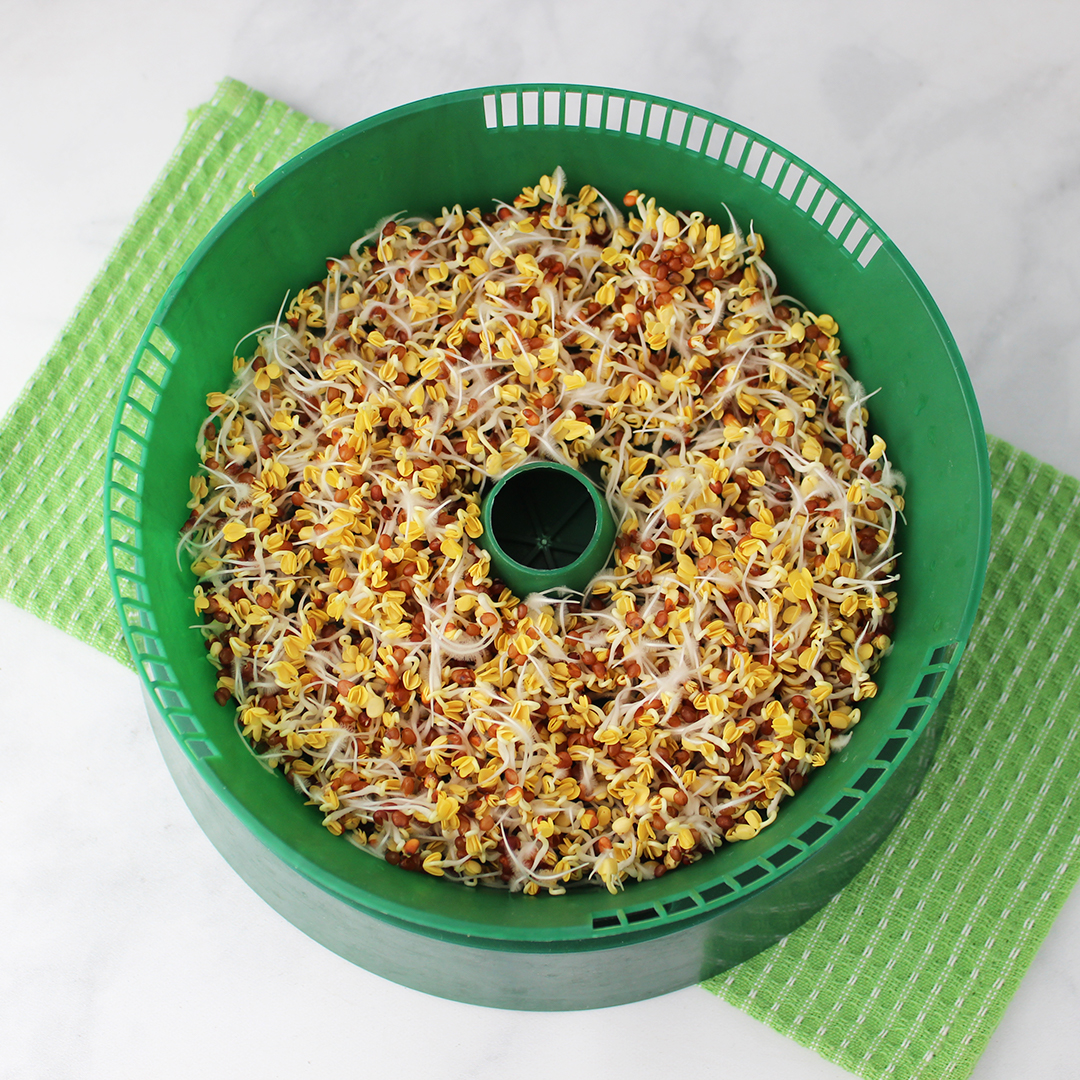
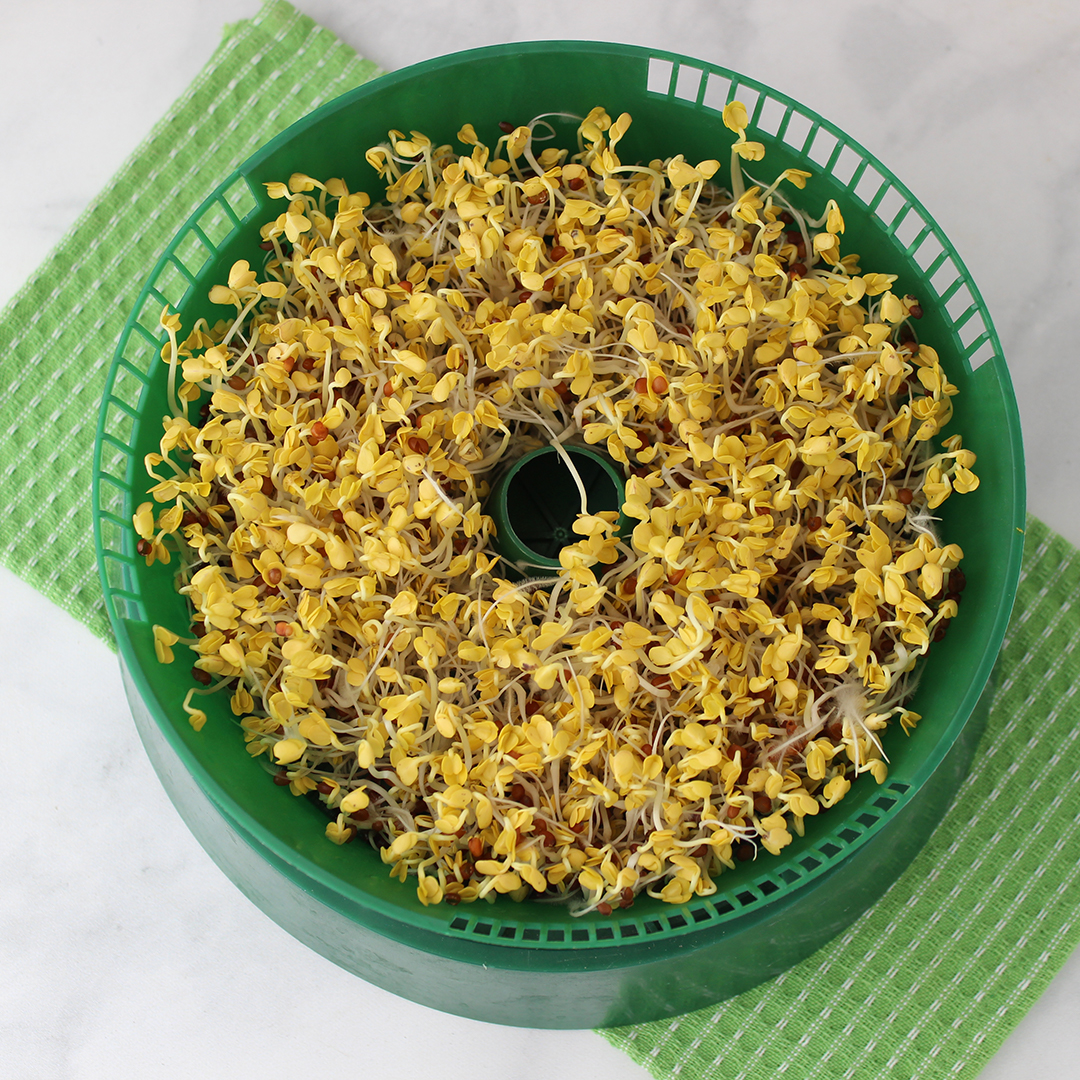
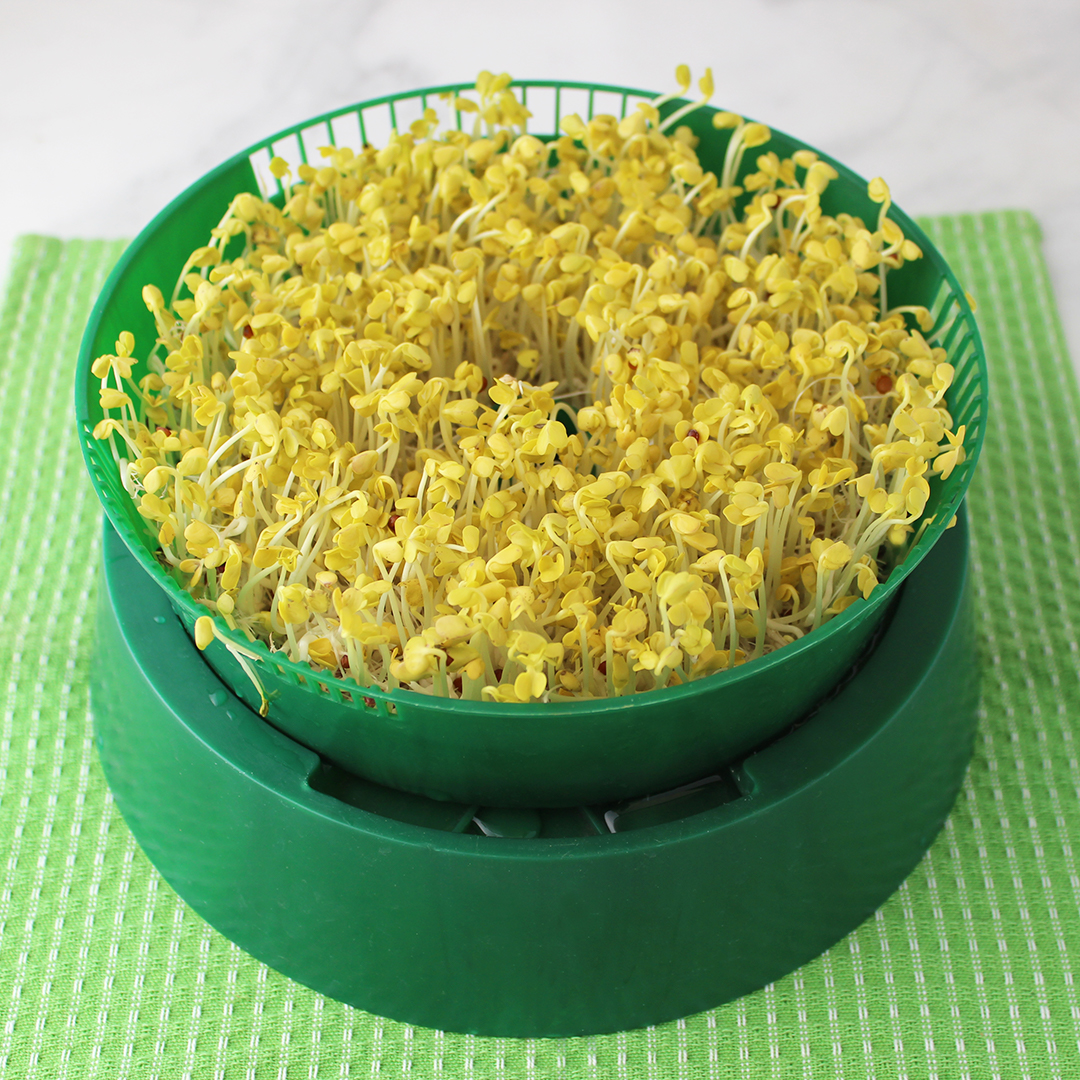
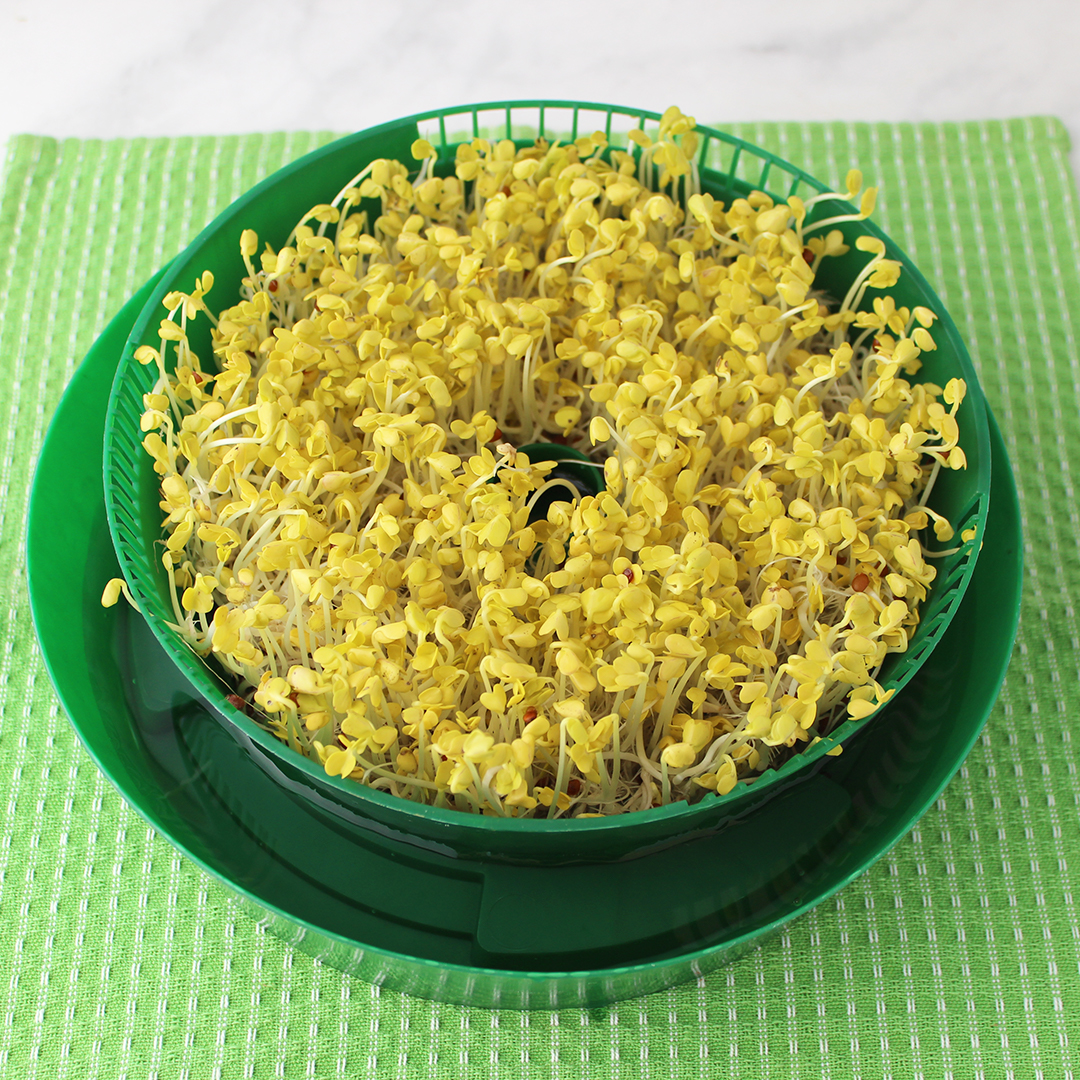
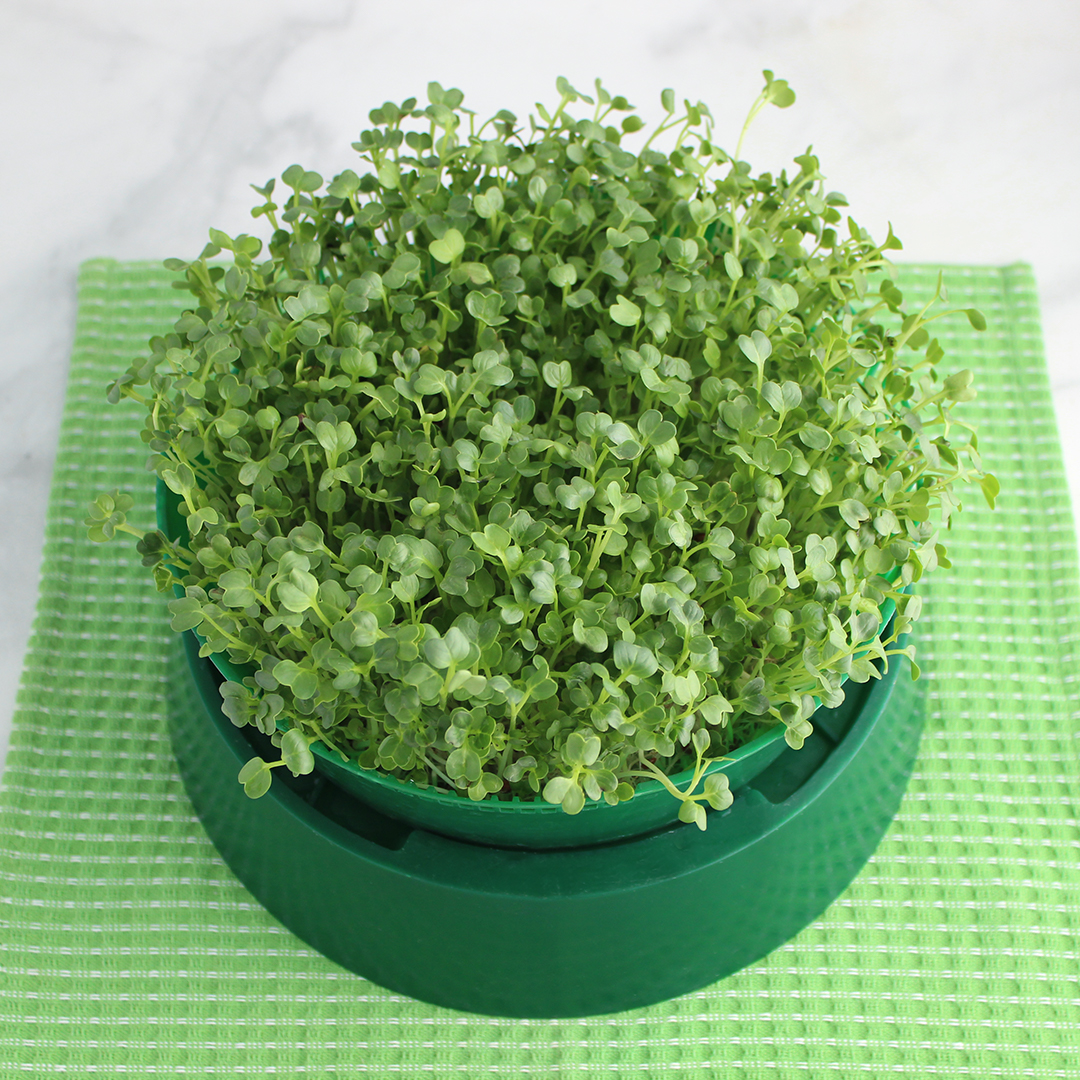
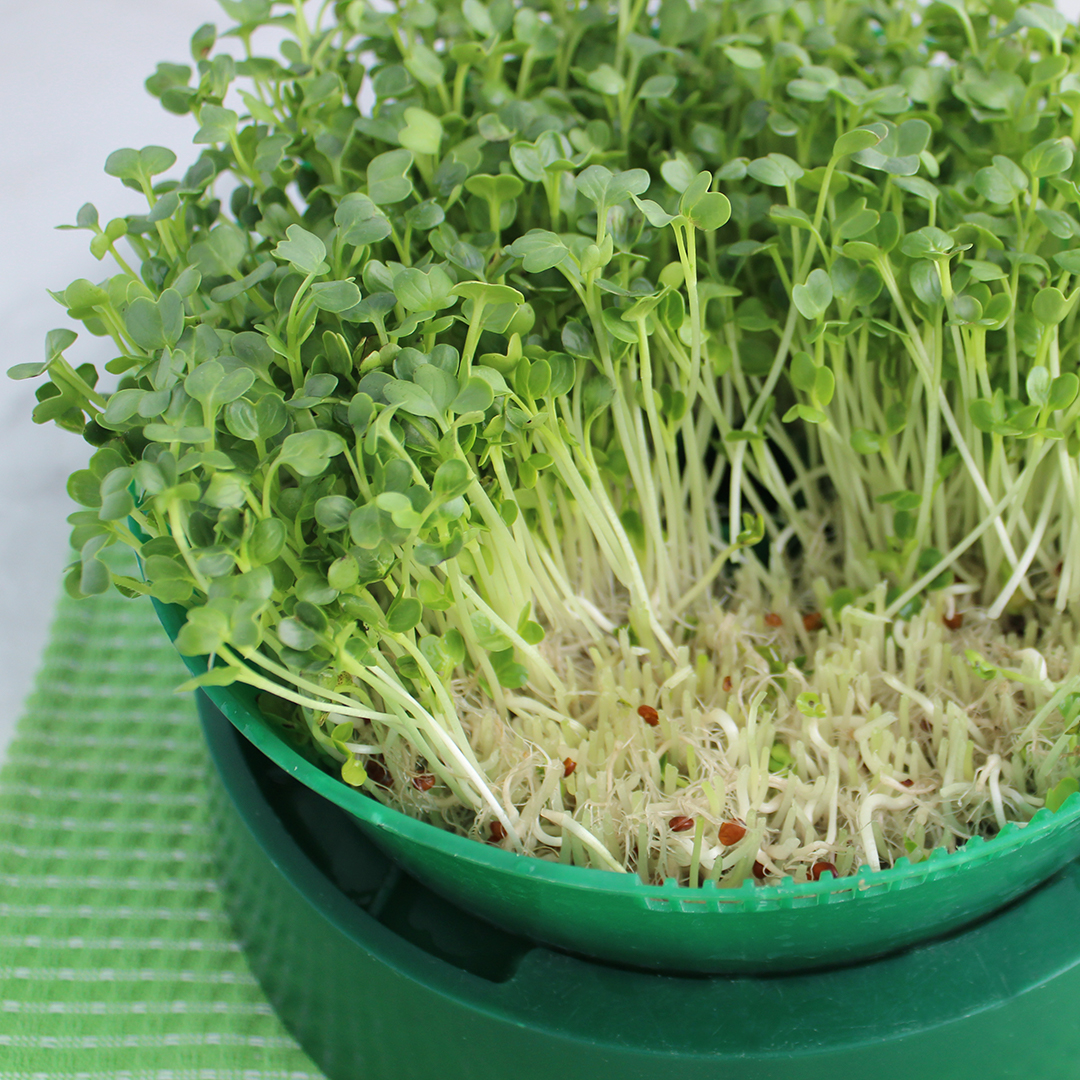
Note: Once you get down the basic growing technique, you might want to also consider using some type of hydroponic growing solution. We use a kelp seaweed solution measuring out one teaspoon to one gallon of pure water which we use in the initial seed soaking process and in spray bottles when spraying the sprouts.
Daikon Sprouts Nutrition and the Sulforaphene Compound
Daikon and other radishes come from the Brassica family of
cruciferous vegetables and are botanically related to other spicy plants
such as mustard, arugula, watercress, and horseradish.
These
species owe their sharp pungent flavor to various sulfur-bearing
isothiocyanates that are specifically released when the sprouts, leaves,
or vegetables are chewed.
The high content of glucosinolates and subsequent isothiocyanates that occur when daikon sprouts are consumed, have been shown in early research to have a potent antioxidative influence. (*)
All radish sprouts, both daikon and the red radish Raphanus sativus species, breakdown to form a substance known as SULFORAPHENE similar to the popular health-promoting sulfurophane or SGS compound found in broccoli sprouts. Instead of glucoraphanin, radish contains glucoraphenin which converts to the isothiocyanate, sulforaphene rather than sulfurophane. (Source)
Sulfurophene has been recently studied to also have beneficial properties.
In a study published in the Journal of Food Science, it was reported that radish sprouts contain significantly greater glucosinolates, isothiocyanates, and phenolic compounds compared to the mature radish root vegetable.
List of Other Nutritional Benefits
- Good source of fiber
- High in enzyme content
- Chlorophyll-rich
- Stimulating to lymph system
- Cleansing to the body
- Good source of vitamin C, folate, niacin and vitamin B6
- Contain trace amounts of amino acids and many minerals
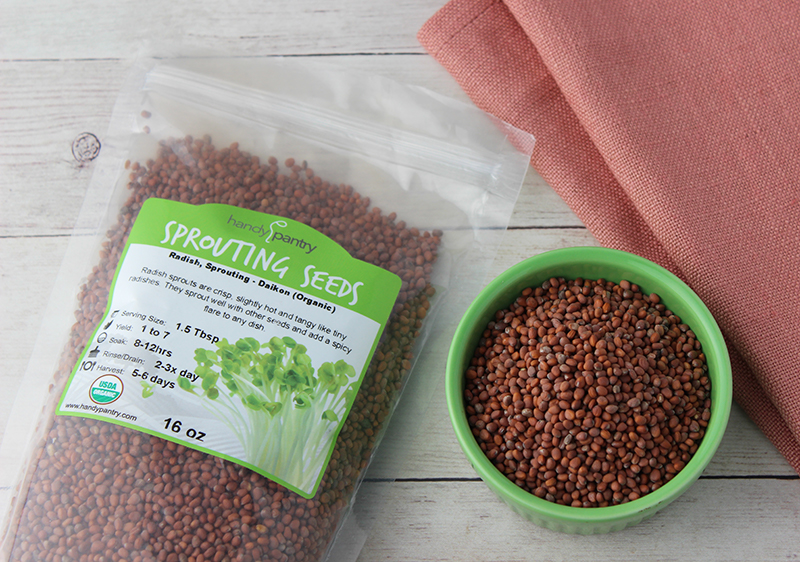
Important When Purchasing Sprouting Seeds
It is always best to purchase certified organic non-GMO sprouting seeds that have gone through thorough lab testing to avoid some of the food safety issues associated with low-quality seed sources. Here is a link to our favorite online seed supplier.
Precautions:
Avoid consuming daikon sprouts if you have sensitivities to cruciferous vegetables or phytoestrogens. Seek the advice of a qualified health professional before adding daikon radish microgreens to your diet if you are pregnant, nursing, taking prescribed medications, or if you have a serious medical condition.
Shop Related Products (About Affiliates & Amazon Associate Paid Links)
Affiliate Disclaimer: This section contains affiliate product links. If you make a purchase through our recommended links, we receive a small commission at no additional cost to you. Thanks for the support.

